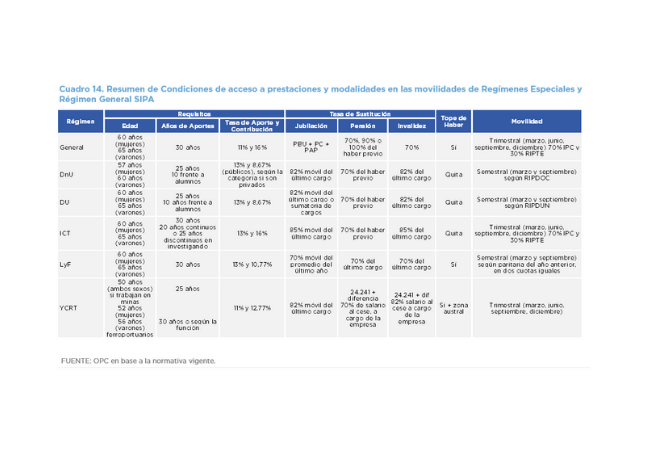
REPORT ON SPECIAL NATIONAL PENSION REGIMES FOR TEACHERS, RESEARCHERS AND WORKERS OF LUZ Y FUERZA AND OF YACIMIENTOS CARBONÍFEROS DE RÍO TURBIO
The Law of Social Solidarity and Productive Reactivation within the framework of the Public
Emergency provides for a review of the special pension regimes to formulate a proposal for
amendment to the National Congress.
The analysis of five of the seven special pension regimes (non-university teachers; university
teachers; researchers and scientists; workers of Yacimientos Carboníferos Fiscales and of Luz
y Fuerza) shows that their average benefit is significantly higher than the general average and
explains the 27% of the contributory pension deficit, although they accounted for only 10% of
the pension expenditure in March 2020.
- These special regimes belong to the public sphere and their mobility is linked to the
evolution of the current salary with less prevalence of inflation as is the case in the
general regime. For this reason, in the last two years, the deficit of the general regime
has gained relative weight compared to the others. - However, all Special Regimes included in this projection would be increasing their
contributory deficit during 2020. - The benefit of non-university teachers doubles the general regime’s average. That of
researchers and workers of Yacimientos Carboníferos Fiscales quadruples it. - The pension benefits guarantee between 70% (Luz y Fuerza) and 85% (researchers and
scientists) of the salary at the time of retirement, but the different adjustment formulas
only guarantee the stability of this parameter in some regimes. - Special benefits should be reduced between 29 and 41% to have the same equivalence (salary replacement) of the general regime.
- From 2018 to last June, all regimes analyzed show a negative real mobility, ranging from a 10.92% decrease in the general regime, to a 23.69% drop for benefits for Luz y Fuerza.
Since the government is the one who employs and covers the deficit, to close this gap it would
not be useful to increase employer contributions or the retirement age, a measure that usually
takes effect only in the medium term. A possible more immediate fiscal impact could be
achieved by raising personal contributions or establishing a ceiling equivalent to the maximum
amount of the general regime.
